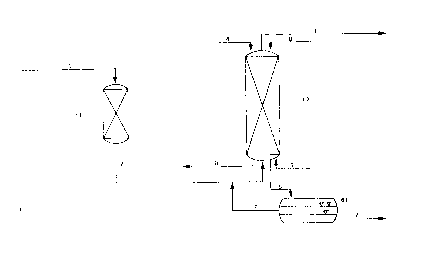Some of the information on this Web page has been provided by external sources. The Government of Canada is not responsible for the accuracy, reliability or currency of the information supplied by external sources. Users wishing to rely upon this information should consult directly with the source of the information. Content provided by external sources is not subject to official languages, privacy and accessibility requirements.
Any discrepancies in the text and image of the Claims and Abstract are due to differing posting times. Text of the Claims and Abstract are posted:
| (12) Patent Application: | (11) CA 2197044 |
|---|---|
| (54) English Title: | PROCESS FOR REMOVING ETHERS AND POLYCYCLIC AROMATIC HYDROCARBONS FROM GROUNDWATER |
| (54) French Title: | METHODE POUR ELIMINER DES ETHERS-OXYDES ET DES HYDROCARBURES AROMATIQUES POLYCYCLIQUES DANS LES EAUX SOUTERRAINES |
| Status: | Deemed Abandoned and Beyond the Period of Reinstatement - Pending Response to Notice of Disregarded Communication |
| (51) International Patent Classification (IPC): |
|
|---|---|
| (72) Inventors : |
|
| (73) Owners : |
|
| (71) Applicants : |
|
| (74) Agent: | SMART & BIGGAR LP |
| (74) Associate agent: | |
| (45) Issued: | |
| (22) Filed Date: | 1997-02-07 |
| (41) Open to Public Inspection: | 1997-08-09 |
| Examination requested: | 2001-11-29 |
| Availability of licence: | N/A |
| Dedicated to the Public: | N/A |
| (25) Language of filing: | English |
| Patent Cooperation Treaty (PCT): | No |
|---|
| (30) Application Priority Data: | ||||||
|---|---|---|---|---|---|---|
|
Disclosed is a process for purifying groundwater by
initially separating off solid constituents, adsorbing ethers
and polycyclic aromatic hydrocarbons to an absorber resin,
desorbing the adsorbed compounds with steam and regenerating
the adsorbed resin with an acid. The process enables ethers
and polycyclic aromatic hydrocarbons to be separated off from
polluted groundwater to such a substantial extent that the
groundwater can be added to flowing surface waters without
problem. The purified water can, if appropriate, be used as
cooling water or, after further biological purification, can
also be used as drinking water.
Méthode pour purifier de l'eau souterraine par séparation au départ des constituants solides, par adsorption des éthers-oxydes et des hydrocarbures aromatiques polycycliques sur une résine adsorbante, par désorption des composés adsorbés à l'aide de vapeur, et enfin par régénération de la résine à l'aide d'un acide. Le procédé permet de séparer les éthers-oxydes et les hydrocarbures aromatiques polycycliques des eaux souterraines polluées, à un degré tel qu'il devient possible de faire passer sans problème ces eaux dans les eaux mouvantes de surface. L'eau purifiée peut, au besoin, servir comme eau de refroidissement ou, après une purification biologique supplémentaire, comme eau potable.
Note: Claims are shown in the official language in which they were submitted.
Note: Descriptions are shown in the official language in which they were submitted.

2024-08-01:As part of the Next Generation Patents (NGP) transition, the Canadian Patents Database (CPD) now contains a more detailed Event History, which replicates the Event Log of our new back-office solution.
Please note that "Inactive:" events refers to events no longer in use in our new back-office solution.
For a clearer understanding of the status of the application/patent presented on this page, the site Disclaimer , as well as the definitions for Patent , Event History , Maintenance Fee and Payment History should be consulted.
| Description | Date |
|---|---|
| Inactive: IPC from MCD | 2006-03-12 |
| Application Not Reinstated by Deadline | 2003-02-07 |
| Time Limit for Reversal Expired | 2003-02-07 |
| Deemed Abandoned - Failure to Respond to Maintenance Fee Notice | 2002-02-07 |
| Inactive: Status info is complete as of Log entry date | 2002-01-29 |
| Letter Sent | 2002-01-29 |
| Inactive: Application prosecuted on TS as of Log entry date | 2002-01-29 |
| Request for Examination Requirements Determined Compliant | 2001-11-29 |
| All Requirements for Examination Determined Compliant | 2001-11-29 |
| Letter Sent | 2001-08-23 |
| Reinstatement Requirements Deemed Compliant for All Abandonment Reasons | 2001-08-16 |
| Letter Sent | 2001-04-02 |
| Deemed Abandoned - Failure to Respond to Maintenance Fee Notice | 2001-02-07 |
| Inactive: Applicant deleted | 1997-08-13 |
| Application Published (Open to Public Inspection) | 1997-08-09 |
| Abandonment Date | Reason | Reinstatement Date |
|---|---|---|
| 2002-02-07 | ||
| 2001-02-07 |
The last payment was received on 2001-08-16
Note : If the full payment has not been received on or before the date indicated, a further fee may be required which may be one of the following
Please refer to the CIPO Patent Fees web page to see all current fee amounts.
| Fee Type | Anniversary Year | Due Date | Paid Date |
|---|---|---|---|
| Registration of a document | 1997-02-07 | ||
| MF (application, 2nd anniv.) - standard | 02 | 1999-02-08 | 1999-01-18 |
| MF (application, 3rd anniv.) - standard | 03 | 2000-02-07 | 2000-01-21 |
| Registration of a document | 2001-01-31 | ||
| MF (application, 4th anniv.) - standard | 04 | 2001-02-07 | 2001-08-16 |
| Reinstatement | 2001-08-16 | ||
| Request for examination - standard | 2001-11-29 |
Note: Records showing the ownership history in alphabetical order.
| Current Owners on Record |
|---|
| DEGUSSA-HULS AKTIENGESELLSCHAFT |
| HULS AKTIENGESELLSCHAFT |
| Past Owners on Record |
|---|
| GERDA GRUND |
| JOHN KAHSNITZ |